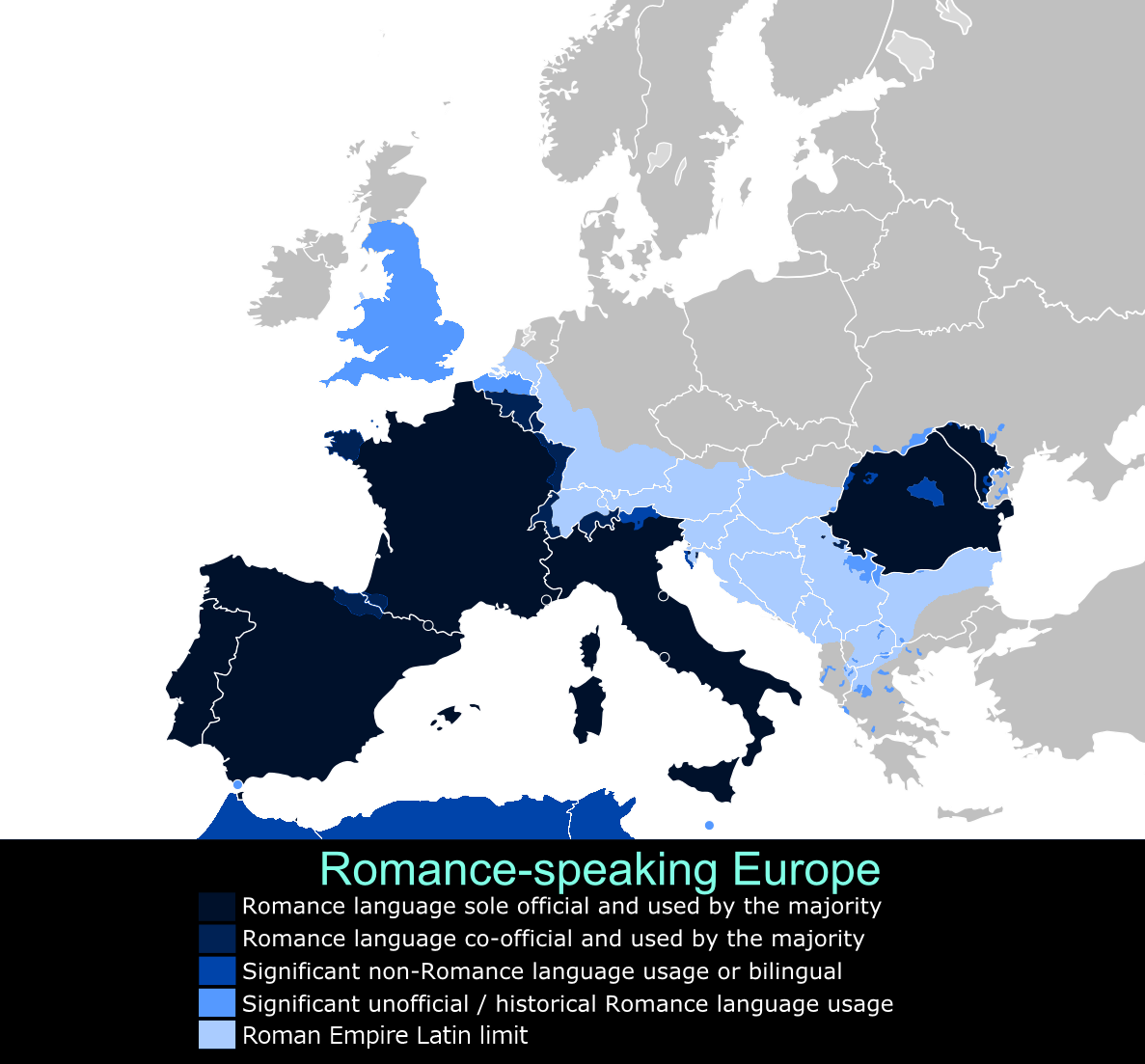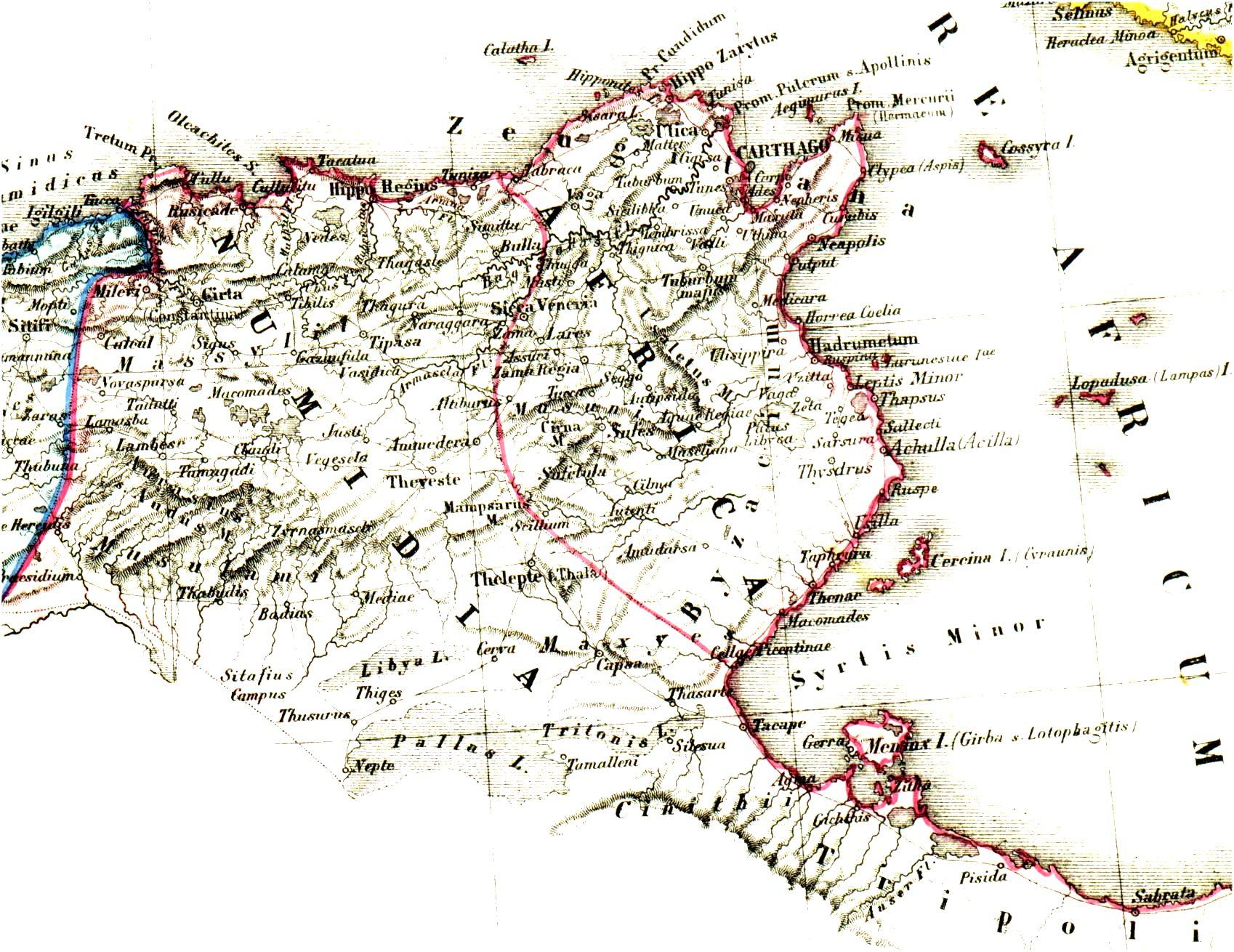|
Pannonian Latin
Pannonian Latin (alternatively Pannonian Romance) was a variant of Vulgar Latin that developed in Pannonia, but became extinct after the loss of the province. History Most likely the bigger part of the indigenous population spoke P-Celtic. This was influenced by the neighbouring cultures (eg. Illyrian and Scythian). Unfortunately, the surviving data isn't enough to distinguish their tribes' languages. The conquest of the region by the Roman Empire was completed by 9 BC, and the territory integrated into Illyricum. In 10 AD Pannonia was organized as a separate province. In Pannonia the material culture of the native population showed little sign of Romanization in the first 160 years of Roman rule. In the second half of the second century there were major changes in the composition of the population, but the organic continuity of the Latin language development of the area is unbroken. The particularly destructive Marcomannic Wars changed the ethno-linguistic makeup of ... [...More Info...] [...Related Items...] OR: [Wikipedia] [Google] [Baidu] |
Pannonia
Pannonia (, ) was a province of the Roman Empire bounded on the north and east by the Danube, coterminous westward with Noricum and upper Italy, and southward with Dalmatia and upper Moesia. Pannonia was located in the territory that is now western Hungary, western Slovakia, eastern Austria, northern Croatia, north-western Serbia, northern Slovenia, and northern Bosnia and Herzegovina. Name Julius Pokorny believed the name ''Pannonia'' is derived from Illyrian, from the Proto-Indo-European root ''*pen-'', "swamp, water, wet" (cf. English ''fen'', "marsh"; Hindi ''pani'', "water"). Pliny the Elder, in '' Natural History'', places the eastern regions of the Hercynium jugum, the "Hercynian mountain chain", in Pannonia and Dacia (now Romania). He also gives us some dramaticised description of its composition, in which the proximity of the forest trees causes competitive struggle among them (''inter se rixantes''). He mentions its gigantic oaks. But even he—if the passage in ... [...More Info...] [...Related Items...] OR: [Wikipedia] [Google] [Baidu] |
Western Roman Empire
The Western Roman Empire comprised the western provinces of the Roman Empire at any time during which they were administered by a separate independent Imperial court; in particular, this term is used in historiography to describe the period from 395 to 476, where there were separate coequal courts dividing the governance of the empire in the Western and the Eastern provinces, with a distinct imperial succession in the separate courts. The terms Western Roman Empire and Eastern Roman Empire were coined in modern times to describe political entities that were ''de facto'' independent; contemporary Romans did not consider the Empire to have been split into two empires but viewed it as a single polity governed by two imperial courts as an administrative expediency. The Western Roman Empire collapsed in 476, and the Western imperial court in Ravenna was formally dissolved by Justinian in 554. The Eastern imperial court survived until 1453. Though the Empire had seen periods with m ... [...More Info...] [...Related Items...] OR: [Wikipedia] [Google] [Baidu] |
Penn State University Park
University Park, also referred to as Penn State University Park, is the name given to the Pennsylvania State University's main campus located in both State College, Pennsylvania, State College and College Township, Centre County, Pennsylvania, College Township, Pennsylvania. The campus post office was designated "University Park, Pennsylvania" in 1953 by Penn State president Milton S. Eisenhower, Milton Eisenhower, after what was then Pennsylvania State College was upgraded to university status. History The school that later became Penn State University was founded as a degree-granting institution on February 22, 1855, by act P.L. 46, No. 50 of the Pennsylvania General Assembly, General Assembly of the Commonwealth of Pennsylvania as the Farmers' High School of Pennsylvania. Centre County, Pennsylvania, Centre County, Pennsylvania, became the home of the new school when James Irvin (politician), James Irvin of Bellefonte, Pennsylvania, Bellefonte, Pennsylvania, donated of land ... [...More Info...] [...Related Items...] OR: [Wikipedia] [Google] [Baidu] |
Penn State University Press
The Penn State University Press, also known as The Pennsylvania State University Press, was established in 1956 and is a non-profit publisher of scholarly books and journals. It is the independent publishing branch of the Pennsylvania State University and is a division of the Penn State University Library system. Penn State University Press publishes books and journals of interest to scholars and general audiences. As a part of a land-grant university with a mandate to serve the citizens of the commonwealth of Pennsylvania, it also specializes in works about Penn State University, Pennsylvania, and the mid-Atlantic region. The areas of scholarship the Press is best known for are art history, medieval studies, Latin American studies, rhetoric and communication, religious studies, and Graphic Medicine. In 2016 the Press launched PSU Press Unlocked, an open access platform featuring over 70 books and journals. The Press acquired academic publisher Eisenbrauns, which specializes in ... [...More Info...] [...Related Items...] OR: [Wikipedia] [Google] [Baidu] |
Debrecen
Debrecen ( , is Hungary's second-largest city, after Budapest, the regional centre of the Northern Great Plain region and the seat of Hajdú-Bihar County. A city with county rights, it was the largest Hungarian city in the 18th century and it is one of the Hungarian people's most important cultural centres.Antal Papp: Magyarország (Hungary), Panoráma, Budapest, 1982, , p. 860, pp. 463-477 Debrecen was also the capital city of Hungary during the revolution in 1848–1849. During the revolution, the dethronement of the Habsburg dynasty was declared in the Reformed Great Church. The city also served as the capital of Hungary by the end of World War II in 1944–1945. It is home of the University of Debrecen. Etymology The city is first documented in 1235, as ''Debrezun''. The name derives from the Turkic word , which means 'live' or 'move' and is also a male given name. Another theory says the name is of Slavic origin and means 'well-esteemed', from Slavic Dьbricinъ or ... [...More Info...] [...Related Items...] OR: [Wikipedia] [Google] [Baidu] |
Eötvös Loránd University
Eötvös Loránd University ( hu, Eötvös Loránd Tudományegyetem, ELTE) is a Hungarian public research university based in Budapest. Founded in 1635, ELTE is one of the largest and most prestigious public higher education institutions in Hungary. The 28,000 students at ELTE are organized into nine faculties, and into research institutes located throughout Budapest and on the scenic banks of the Danube. ELTE is affiliated with 5 Nobel laureates, as well as winners of the Wolf Prize, Fulkerson Prize and Abel Prize, the latest of which was Abel Prize winner László Lovász in 2021. The predecessor of Eötvös Loránd University was founded in 1635 by Cardinal Péter Pázmány in Nagyszombat, Kingdom of Hungary (today Trnava, Slovakia) as a Catholic university for teaching theology and philosophy. In 1770, the university was transferred to Buda. It was named Royal University of Pest until 1873, then University of Budapest until 1921, when it was renamed Royal Hungarian Pázmá ... [...More Info...] [...Related Items...] OR: [Wikipedia] [Google] [Baidu] |
British Latin
British Latin or British Vulgar Latin was the Vulgar Latin spoken in Great Britain in the Roman and sub-Roman periods. While Britain formed part of the Roman Empire, Latin became the principal language of the elite, especially in the more romanized south and east of the island. However, in the less romanized north and west it never substantially replaced the Brittonic language of the indigenous Britons. In recent years, scholars have debated the extent to which British Latin was distinguishable from its continental counterparts, which developed into the Romance languages. After the end of Roman rule, Latin was displaced as a spoken language by Old English in most of what became England during the Anglo-Saxon settlement of the fifth and sixth centuries. It survived in the remaining Celtic regions of western Britain but died out in those regions too by about 700, when it was replaced by the local Brittonic languages. Background At the inception of Roman rule in AD 43, Gr ... [...More Info...] [...Related Items...] OR: [Wikipedia] [Google] [Baidu] |
Moselle Romance
Moselle Romance (german: Moselromanisch; french: Roman de la Moselle) is an extinct Gallo-Romance (most probably Langue d'oïl) dialect that developed after the fall of the Roman Empire along the Moselle river in modern-day Germany, near the border with France. It was part of a wider group of Romance relic areas within the German-speaking territory. Despite heavy Germanic influence, it persisted in isolated pockets until the 11th century. Historical background After Julius Caesar conquered Gaul in 50 BC, a Gallo-Roman culture gradually developed in what is today France, southern Belgium, Luxembourg, and the region between Trier and Koblenz. By contrast, the adjacent province of Germania Inferior and part of Germania Superior retained a Germanic character throughout the Imperial period. Emergence The Angles and Saxons, en route to England from their ancestral lands in the western Netherlands and Germany, carved a path through Holland, Flanders, and Brabant and sent the ... [...More Info...] [...Related Items...] OR: [Wikipedia] [Google] [Baidu] |
African Romance
African Romance or African Latin is an extinct Romance language that was spoken in the Roman province of Africa by the Roman Africans during the later Roman and early Byzantine Empires, and several centuries after the annexation of the region by the Umayyad Caliphate in 696 AD. African Romance is poorly attested as it was mainly a spoken, vernacular language, a ''sermo rusticus.'' There is little doubt, however, that by the early 3rd century AD, some native provincial variety of Latin was fully established in Africa.' This language, which developed under Byzantine rule, continued through to the 12th century in various places along the North African coast and the immediate littoral,' with evidence that it may have persisted up to the 14th century,' and possibly even the 15th century,' or later' in certain areas of the interior. Background The Roman province of Africa was organized in 146 BC following the defeat of Carthage in the Third Punic War. The city of Carthage, destro ... [...More Info...] [...Related Items...] OR: [Wikipedia] [Google] [Baidu] |
Monograph
A monograph is a specialist work of writing (in contrast to reference works) or exhibition on a single subject or an aspect of a subject, often by a single author or artist, and usually on a scholarly subject. In library cataloging, ''monograph'' has a broader meaning—that of a nonserial publication complete in one volume (book) or a definite number of volumes. Thus it differs from a serial or periodical publication such as a magazine, academic journal, or newspaper. In this context only, books such as novels are considered monographs.__FORCETOC__ Academia The English term "monograph" is derived from modern Latin "monographia", which has its root in Greek. In the English word, "mono-" means "single" and "-graph" means "something written". Unlike a textbook, which surveys the state of knowledge in a field, the main purpose of a monograph is to present primary research and original scholarship ascertaining reliable credibility to the required recipient. This research is prese ... [...More Info...] [...Related Items...] OR: [Wikipedia] [Google] [Baidu] |
Corpus Inscriptionum Latinarum
The ''Corpus Inscriptionum Latinarum'' (''CIL'') is a comprehensive collection of ancient Latin inscriptions. It forms an authoritative source for documenting the surviving epigraphy of classical antiquity. Public and personal inscriptions throw light on all aspects of Roman life and history. The ''Corpus'' continues to be updated in new editions and supplements. CIL also refers to the organization within the Berlin-Brandenburg Academy of Sciences and Humanities responsible for collecting data on and publishing the Latin inscriptions. It was founded in 1853 by Theodor Mommsen and is the first and major organization aiming at a comprehensive survey. Aim The ''CIL'' collects all Latin inscriptions from the whole territory of the Roman Empire, ordering them geographically and systematically. The earlier volumes collected and published authoritative versions of all inscriptions known at the time—most of these had been previously published in a wide range of publications. The descr ... [...More Info...] [...Related Items...] OR: [Wikipedia] [Google] [Baidu] |






